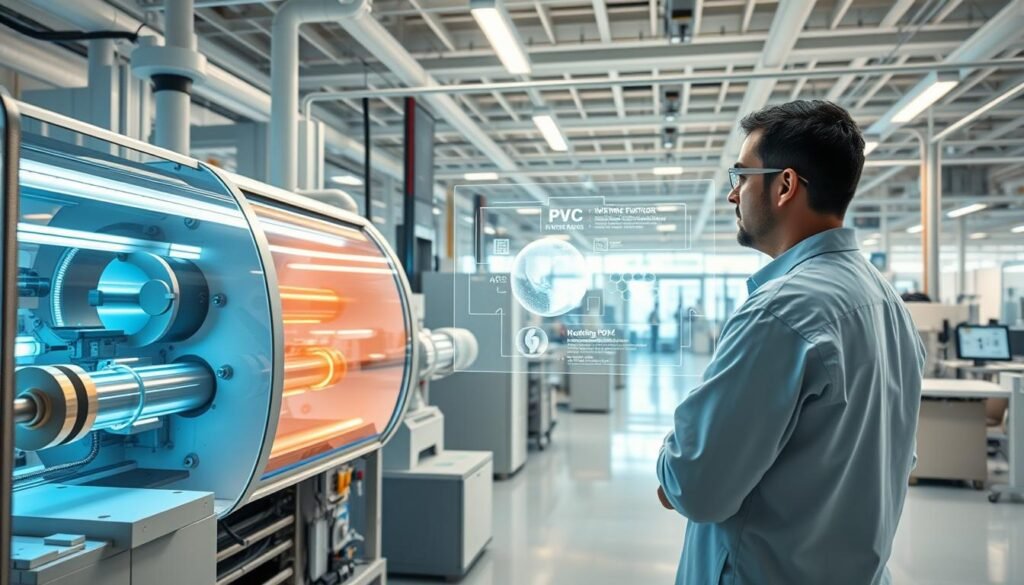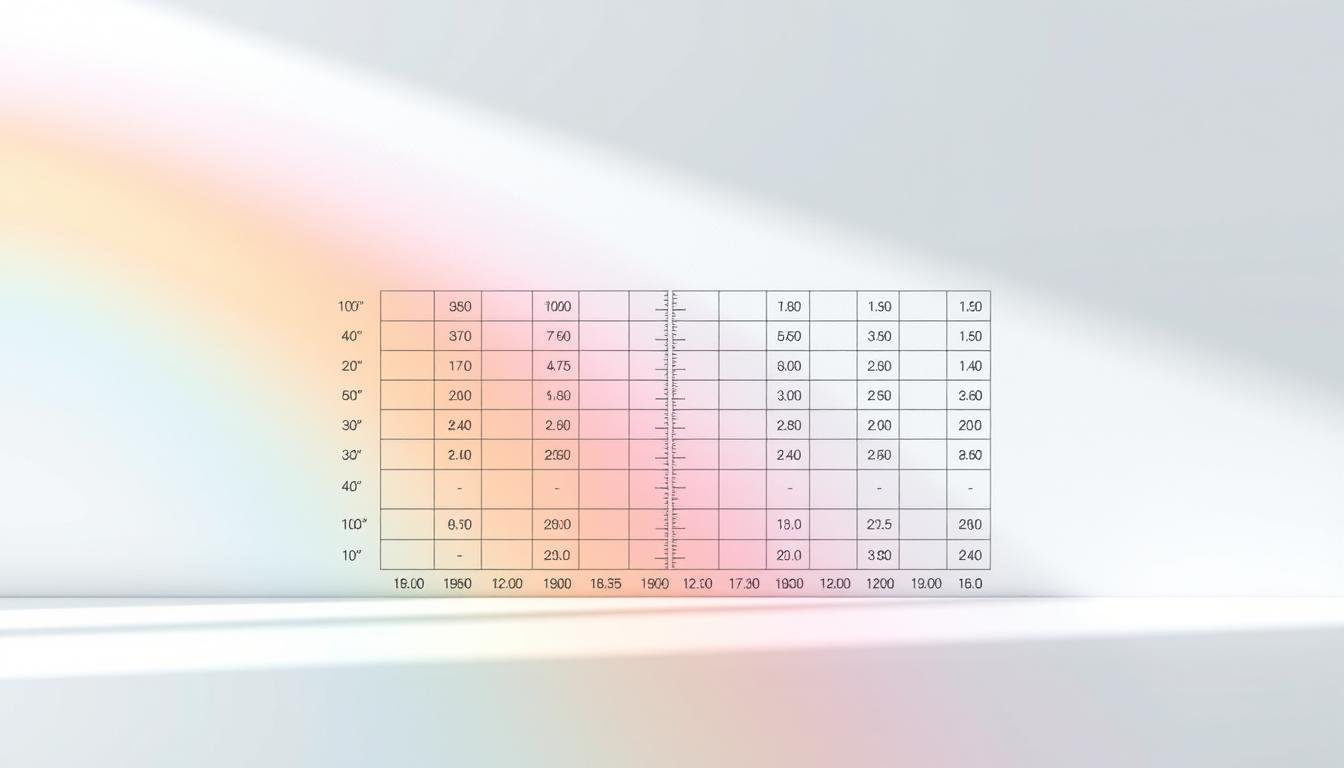Understanding thermal behavior is critical when working with polyvinyl chloride, a material widely used in construction and manufacturing. This thermoplastic’s performance hinges on its response to heat, particularly during shaping and molding processes. Engineers rely on precise temperature data to avoid structural flaws or weakened durability in finished products.
Different formulations of this versatile polymer exhibit distinct heat thresholds. Rigid types withstand higher temperatures, while flexible variants soften at lower ranges. These variations stem from additives like plasticizers, which alter molecular stability and thermal resistance.
Proper heat management ensures efficient production and long-lasting results. Overheating can cause discoloration or release harmful fumes, while insufficient heat leads to incomplete molding. Technicians must balance safety, efficiency, and material integrity throughout manufacturing workflows.
This guide explores key factors influencing thermal transitions, from chemical composition to processing techniques. You’ll learn how industry professionals optimize temperature settings for specific applications, ensuring consistent quality across diverse projects.
Introduction to PVC: Material Overview and Importance
From plumbing systems to medical devices, polyvinyl chloride serves as a backbone for countless modern solutions. This thermoplastic’s unique structure allows it to shift between rigid and flexible forms, making it indispensable across industries.
Defining PVC and Its Common Uses
Known for its semi-crystalline polymer composition, this material adapts to diverse needs through controlled processing. Builders rely on it for water pipes that withstand decades of use, while manufacturers craft durable window frames resistant to weathering.
Key Physical Properties and Versatility
The polymer’s strength comes from three core traits:
- Chemical resistance against corrosive substances
- Impact tolerance for heavy-duty environments
- Heat stability up to 80°C (176°F)
These characteristics explain its dominance in construction projects. Unlike metal alternatives, it resists rust and maintains shape under stress. Flexible variants retain durability while bending around obstacles, proving essential for electrical insulation and medical tubing.
pvc melting point: Fundamentals and Measurement Techniques
Accurate thermal characterization forms the foundation of effective polymer processing. Material scientists use advanced tools to map critical heat thresholds that dictate manufacturing success. These measurements prevent structural weaknesses while maintaining safety standards during production.
Precision Tools for Heat Threshold Mapping
Dynamic Scanning Calorimetry (DSC) revolutionizes how technicians analyze heat flow patterns. This method tracks energy changes as materials transition between solid and molten states. Key benefits include:
- Identification of glass transition phases (70-90°C)
- Crystallinity level calculations
- Decomposition pattern detection
Modern labs combine DSC with thermomechanical analysis for comprehensive insights. Instruments like STA L82 provide simultaneous thermal and weight measurements, while Chip-DSC handles micro-sized samples with enhanced sensitivity.
Critical Heat Zones in Manufacturing
Processing windows balance material flow with structural integrity. The optimal forming range spans 170-190°C, where the polymer achieves sufficient plasticity without breaking down. Three crucial zones guide production:
- Glass transition phase (flexibility changes)
- Primary forming range (shape molding)
- Upper safety limit (210°C max)
These parameters ensure consistent product quality across extrusion and injection molding systems. Real-time monitoring prevents overheating incidents that could release hazardous fumes.
Factors Influencing PVC Thermal Behavior
Material scientists recognize that heat response in industrial polymers isn’t random but shaped by specific variables. Three primary elements dictate performance: molecular architecture, additive chemistry, and production environment dynamics. These components interact to determine how materials behave under thermal stress.
Molecular Architecture and Chemical Modifiers
Long-chain structures with strong polarity resist heat penetration more effectively than shorter variants. Plasticizers act as molecular lubricants, creating space between chains and lowering required processing temperatures. Key modifier effects include:
- Stabilizers increase thermal transition points by 5-15°C
- Fillers alter heat distribution patterns during molding
- Antioxidants prevent oxidative breakdown at elevated temperatures
Production Variables and External Conditions
Manufacturing techniques directly impact thermal stability through mechanical stress and exposure duration. Extrusion processes generate shear forces that can raise material temperatures beyond set parameters. Critical environmental factors:
- Humidity levels above 60% slow heat transfer rates
- Atmospheric contaminants accelerate degradation thresholds
- Barometric pressure changes affect bubble formation in blow molding
Advanced operations use real-time monitoring systems to adjust processing parameters dynamically. This approach maintains optimal viscosity while preventing hazardous fume release, ensuring both safety and material efficiency.
Applications of PVC in Construction, Processing, and Beyond
Modern infrastructure projects increasingly rely on durable materials that balance performance with cost-efficiency. This versatile polymer has become a cornerstone for engineers and architects seeking solutions that withstand harsh conditions while reducing long-term maintenance costs.
PVC Pipe Systems, Window Frames, and Industrial Uses
Pipe networks form the backbone of modern water management systems. Municipalities across the U.S. prioritize these systems for their ability to handle pressure surges and resist mineral buildup. Key advantages include:
- 50-year lifespan in underground installations
- Corrosion resistance in acidic soil conditions
- Leak-proof joints that maintain water quality
Window manufacturers have revolutionized energy efficiency through innovative designs. Multi-chamber profiles filled with argon gas create thermal barriers, cutting heating costs by up to 30% compared to aluminum alternatives.
“The shift to advanced polymer systems has transformed how we approach sustainable building practices.”
| Material | Thermal Conductivity (W/mK) | Cost per Linear Foot | Lifespan (Years) |
|---|---|---|---|
| PVC Pipe | 0.19 | $1.20 | 50-70 |
| Copper Pipe | 401 | $3.80 | 40-50 |
| Galvanized Steel | 50 | $2.50 | 25-40 |
Industrial facilities leverage chemical-resistant properties for transporting aggressive substances. Waste treatment plants use specialized formulations to handle pH extremes that would corrode metal alternatives within months.
From residential water supply lines to high-pressure chemical transfer systems, this material continues to redefine durability standards. Its combination of flexibility and rigidity allows customized solutions for projects ranging from skyscraper plumbing to agricultural irrigation networks.
Optimizing PVC Processing Parameters for Durability and Efficiency
Mastering thermal parameters determines success in polymer manufacturing. Advanced techniques now enable precise control over material behavior, ensuring products meet rigorous performance standards while maximizing production efficiency.
Temperature Control Strategies in Extrusion and Molding
Modern injection molding systems maintain critical thresholds between 170°C and 190°C. This range achieves optimal flow properties without risking decomposition. Three key factors prevent quality issues:
- Real-time thermal sensors adjust barrel heating zones
- Mold surfaces kept at 50-60°C enhance finish quality
- Residence time limits prevent molecular breakdown
Extrusion processes require dual-phase management. Operators balance melt temperatures with cooling rates to prevent warping. Automated systems track pressure changes, adjusting screw speeds to maintain consistent output.
Balancing Flexibility and Rigidity for Long-Term Stability
Material engineers achieve desired properties through controlled cooling cycles. Rapid chilling enhances rigidity, while gradual transitions promote flexibility. Successful formulations consider:
- Plasticizer ratios affecting bend tolerance
- Wall thickness influencing heat dissipation
- Environmental exposure requirements
As detailed in our thermal behavior analysis, exceeding 260°C triggers hazardous decomposition. Modern plants use infrared scanners to detect early warning signs, shutting down systems before acid fumes form.
“Precision temperature management separates premium manufacturers from competitors in today’s market.”
These strategies ensure products withstand decades of use while maintaining production efficiency. Continuous monitoring systems now provide data-driven insights, revolutionizing how industries approach polymer processing.
Innovations and Future Trends in PVC Technology
Recent breakthroughs in polymer science are redefining what industrial materials can achieve. Engineers now push thermal boundaries to create solutions for extreme environments, from chemical plants to aerospace systems. These advancements balance performance with ecological responsibility.

Emerging Technologies and Sustainable Practices
Chlorinated variants demonstrate remarkable progress, handling high-temperature applications up to 260°C. This makes them ideal for pressurized hot water lines and industrial heat exchangers. Modern labs use laser-based analysis tools to map temperature resistance thresholds with 0.5°C precision.
Three key developments dominate current research:
- Self-regulating formulations that adapt to thermal stress
- Recyclable composites maintaining durability across multiple lifecycles
- Bio-based plasticizers reducing reliance on fossil fuels
Manufacturers now embed nanosensors during production. These devices monitor structural integrity in real-time, alerting technicians before gases form from overheating. Such technology prevents failures in critical infrastructure like fire sprinkler systems.
“Next-gen polymers will transform industries needing materials that laugh at extreme conditions.”
Future trends focus on solar-adaptive blends for outdoor applications. These innovations promise 50-year lifespans in desert environments while cutting energy use in processing by 40%.
Conclusion
Material engineers face critical decisions when selecting polymer formulations for industrial applications. The thermal thresholds of rigid uPVC (200-250°C) and plasticized variants (100-200°C) demonstrate how composition dictates performance. These ranges directly impact manufacturing efficiency and product durability in sectors from construction to medical device production.
Precise thermal analysis forms the backbone of successful processing. As detailed in our breakdown of temperature’s influence on material, maintaining 170-190°C during molding prevents degradation while ensuring structural integrity. Advanced monitoring systems now track heat distribution in real-time, reducing waste and improving consistency.
Future innovations will focus on eco-friendly formulations that retain heat resistance. Emerging technologies aim to extend service life in extreme conditions while streamlining production workflows. Successful implementation requires balancing thermal data, environmental factors, and end-use requirements.
The polymer’s adaptability continues to drive its dominance across industries. By mastering temperature parameters, professionals unlock its full potential – creating solutions that withstand decades of use while meeting evolving sustainability standards.
